Understanding GeForce Now Graphics Cards Guide


Intro
GeForce Now represents a significant shift in how gamers experience graphics processing. As cloud gaming gains traction, understanding the role of graphics cards in platforms like GeForce Now is vital for gamers seeking optimal performance. This guide aims to clarify the specifications, features, and advantages of utilizing GeForce Now.
By leveraging cloud technology, GeForce Now enables users to play demanding games without the need for high-end hardware. This potential makes it particularly appealing to those who want to game on various devices without investing heavily in a powerful gaming setup. This article will navigate through crucial aspects such as design, specifications, and performance, helping readers to grasp what makes GeForce Now a compelling choice in the ever-evolving landscape of gaming.
Key Features
Design and Build Quality
GeForce Now operates distinctly from traditional graphics cards. Since much of the processing occurs in data centers, the physical design of consumer hardware is less critical. However, the technology behind GeForce Now must ensure smooth performance. NVIDIA has invested heavily in the infrastructure that supports this platform.
The servers used for GeForce Now feature powerful GPUs like the NVIDIA Turing architecture, which provides real-time ray tracing and AI-based enhancements. This setup allows users to experience high-quality graphics generally reserved for more powerful local setups.
Display and Performance
Performance is a critical concern for gamers. GeForce Now delivers an impressive gaming experience by tapping into NVIDIA’s powerful GPUs. The platform supports high resolutions and frame rates. However, factors such as internet connection and server location heavily influence individual performance.
"A stable internet connection can drastically enhance the cloud gaming experience, providing smoother visuals and reduced latency."
Additionally, GeForce Now's adaptive streaming technology optimizes the gaming experience by adjusting the graphics quality based on the user's bandwidth. It minimizes lag while ensuring visual fidelity.
Product Specifications
Technical Specifications
The specifics of how GeForce Now operates are noteworthy.
- Supported Resolutions: Up to 4K for premium subscribers.
- Frame Rate: 60 frames per second on supported titles.
- Audio: Spatial audio supported for an immersive experience.
These specifications offer a glimpse into the capabilities of GeForce Now, making it comparable to standard gaming setups equipped with NVIDIA graphics cards.
Compatibility and Connectivity
GeForce Now stands out due to its broad compatibility with various devices, including:
- PC and Mac operating systems
- NVIDIA Shield
- Android devices
- Certain smart TVs
Connecting to the service involves a stable internet connection, ideally fiber or cable, offering at least 15 Mbps for optimal performance. Users need to configure their devices accordingly to take full advantage of the GeForce Now technology.
Overall, understanding these elements is vital in determining if GeForce Now is right for your gaming needs.
Prelude to GeForce Now
The introduction of GeForce Now marks a critical juncture in the domain of cloud gaming. This platform stands out by offering the capability to stream high-quality games without requiring the user to invest in expensive hardware. It allows access to powerful graphics processing units, which enable immersive gaming experiences that were once limited to those who owned high-end PCs or consoles. The relevance of this topic lies not only in the technological advancements it represents but also in the accessibility it provides to gamers across different platforms. As cloud gaming continues to gain traction, understanding GeForce Now is essential for those seeking options beyond traditional gaming setups.
Definition and Overview
GeForce Now is a service developed by NVIDIA that allows users to play PC games on various devices via cloud streaming. It operates by leveraging remote servers equipped with powerful graphics cards. Users can access their game libraries from platforms like Steam, Epic Games Store, and others, allowing for flexibility and convenience. The fundamental concept is simple: rather than run the game on a local machine, the computation occurs in the cloud, and the inputs are sent back and forth between the user and the server. This setup opens up gaming to devices that may not have sufficient hardware capabilities.
In essence, GeForce Now enables users to enjoy demanding titles on a range of devices, such as low-end laptops, tablets, and even smartphones, provided there is a stable internet connection. The service operates through a subscription model, allowing for different tiers of performance and access. The service competes with other platforms but has unique features such as NVIDIA's proprietary technology to enhance the visual quality and gameplay experience, making it a noteworthy player in the evolving gaming landscape.
Evolution of Cloud Gaming
Cloud gaming has undergone significant transformation since its inception. Initially, the concept faced skepticism regarding latency, bandwidth requirements, and overall user experience. Early attempts at cloud services often left users frustrated due to lag and poor image quality. However, advancements in internet speeds and cloud computing technology have addressed many of these concerns, leading to a resurgence in interest.
With gaming becoming more mainstream, companies like NVIDIA and others have invested heavily into making cloud gaming viable. GeForce Now represents the culmination of these efforts, aiming to deliver a seamless experience to users. The evolution has also seen gaming platforms shifting towards subscription models, reflecting changing consumer preferences. As gamers become increasingly demanding for accessibility and quality, services like GeForce Now exemplify the future of gaming, where robust hardware is no longer a necessity for an engaging experience.
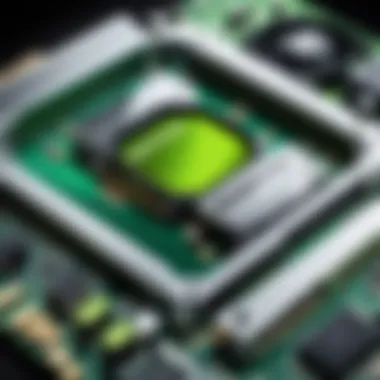
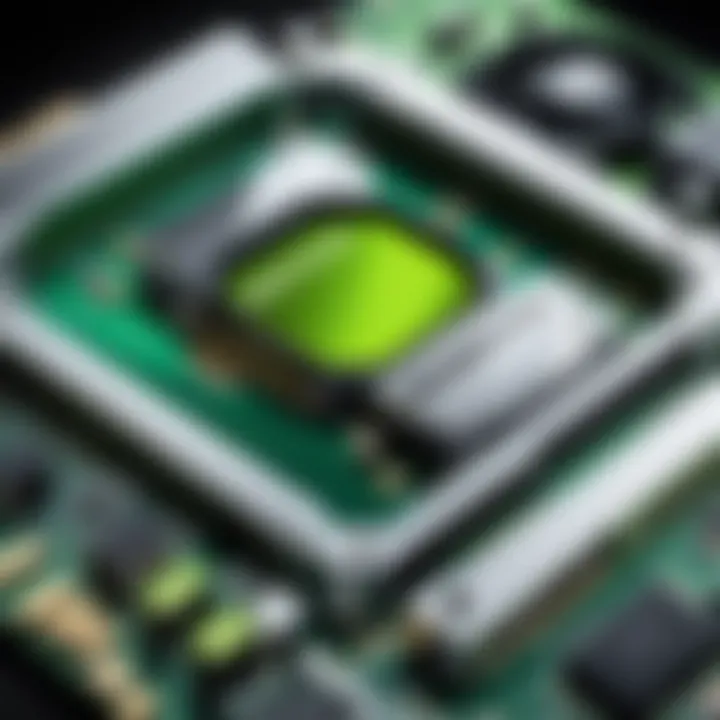
"Cloud gaming is not just about convenience; it’s about redefining how we interact with games and platforms."
The journey of cloud gaming is ongoing, with each year bringing new innovations and improvements. As infrastructures develop and technologies like 5G become more prevalent, the potential for GeForce Now and similar services to flourish is significant. Understanding this evolution offers insights into why platforms like GeForce Now are so crucial in the contemporary gaming arena.
Graphics Cards: The Basics
Understanding the underlying principles of graphics cards is crucial for readers who wish to delve into cloud gaming technologies like GeForce Now. Graphics cards are integral to the display and rendering of images in video games. They act as the bridge between the game data and its visual output on screens. Knowing the basics can enhance one's gaming experience significantly.
An essential aspect to consider is the evolution of graphics cards, which have transitioned from standard integrated solutions to powerful dedicated options. This evolution has contributed greatly to the sophistication of gaming graphics and the overall experience. One key benefit of understanding graphics cards is recognizing their role in the performance of cloud gaming services like GeForce Now.
Understanding Graphics Processing Units
Graphics Processing Units (GPUs) are specialized electronic circuits designed to accelerate the rendering of images and videos. In essence, they are the heart of any modern gaming rig or cloud gaming system. A well-optimized GPU determines the frame rates and quality of graphics one experiences while gaming.
The architecture of GPUs allows them to handle multiple tasks simultaneously, which is particularly beneficial for rendering complex scenes in real time.
Key Specifications of Graphics Cards
The specifications of a graphics card speak volumes about its performance capabilities. These specifications generally include several critical elements, such as CUDA cores, clock speed, and memory bandwidth.
CUDA Cores
CUDA Cores are fundamental components of NVIDIA GPUs, designed to carry out parallel processing tasks. The advantage of these cores lies in their ability to execute multiple operations simultaneously, speeding up the rendering process significantly.
Having more CUDA cores typically translates to better performance, particularly in demanding gaming scenarios. This makes them a popular choice among gamers who demand high-quality graphics and smooth gameplay. However, the number of CUDA cores alone does not dictate performance, as other factors such as architecture and software optimization also play a role.
Clock Speed
Clock speed, measured in megahertz (MHz), indicates how quickly a GPU can process tasks. Higher clock speeds often lead to improved performance in gaming and graphics-intensive applications. This means that the graphics card can render frames at a quicker rate, delivering a more fluid gaming experience.
However, it’s essential to note that clock speeds can vary under different loads, which may lead to thermal throttling in sustained gaming sessions. Thus, while a high clock speed is advantageous, it must also be supported by efficient cooling solutions for consistent performance.
Memory Bandwidth
Memory bandwidth refers to the amount of data that can be transferred to and from the GPU’s memory in a given time frame. It is a key specification that influences how quickly a graphics card can access the textures and data required for rendering. Higher memory bandwidth means that the graphics card can handle more data simultaneously. This is crucial for processing high-resolution textures and complex graphic environments.
However, memory bandwidth needs to be balanced with other factors such as memory capacity and speed. In the context of GeForce Now, efficient memory bandwidth contributes to minimizing latency and maximizing performance during gaming sessions.
Understanding these specifications equips users with the knowledge to make informed decisions when selecting graphics cards or cloud gaming services like GeForce Now.
By understanding the fundamental building blocks of graphics cards, users gain a clearer picture of the potential available to them in gaming, especially when utilizing cutting-edge technologies.
The Role of GeForce Now in Gaming
GeForce Now plays a significant part in modern gaming, changing how individuals access and experience games. It enables players to utilize powerful hardware through cloud infrastructure, reducing the necessity to invest in expensive gaming rigs. The growing trend of cloud gaming means players can enjoy high-quality graphics and performance without the usual constraints of traditional setup.
How GeForce Now Works
GeForce Now operates by leveraging NVIDIA’s data centers filled with high-performance graphics cards. When a gamer launches a game through GeForce Now, it runs on these powerful machines. The visual output is streamed back to the player's device, while player inputs are sent to the server in real time. This architecture allows players to enjoy the latest games without the need for local hardware capable of running them. It supports a wide range of devices including lower-spec laptops, desktops, and even mobile devices, showcasing its versatility.
One of the key aspects of how GeForce Now functions is its ability to scale resources based on demand. If a game requires more power, the service allocates the necessary virtual machines in the cloud, effectively optimizing performance dynamically. This adaptability not only enhances user experience but also justifies the use of this technology over traditional gaming setups.
Streaming and Latency Considerations
While the setup of GeForce Now is impressive, streaming quality and latency are critical aspects that can impact gaming experiences. Latency refers to the time delay between input and action seen on the screen. In gaming, especially competitive ones, lower latency is vital.
To mitigate latency, several factors come into play:
- Network Connection: A stable, fast internet connection is essential. GeForce Now recommends a minimum of 15 Mbps for 720p resolution streaming. Higher bandwidth provides better clarity and smoother visuals and reduces lag.
- Geographical Location: Proximity to the nearest NVIDIA server greatly influences performance. Users may experience lower latency if they are closer to these data centers.
- Device Performance: While the cloud handles intensive processing, local device performance can still impact overall experience. Devices with higher specifications can help in receiving and processing the streamed data more effectively, enhancing gameplay.
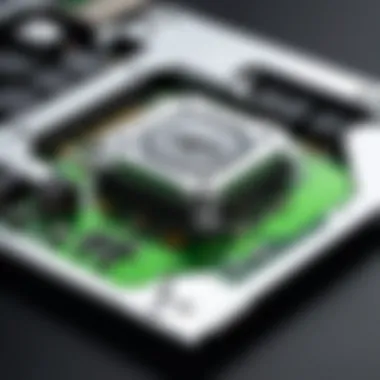
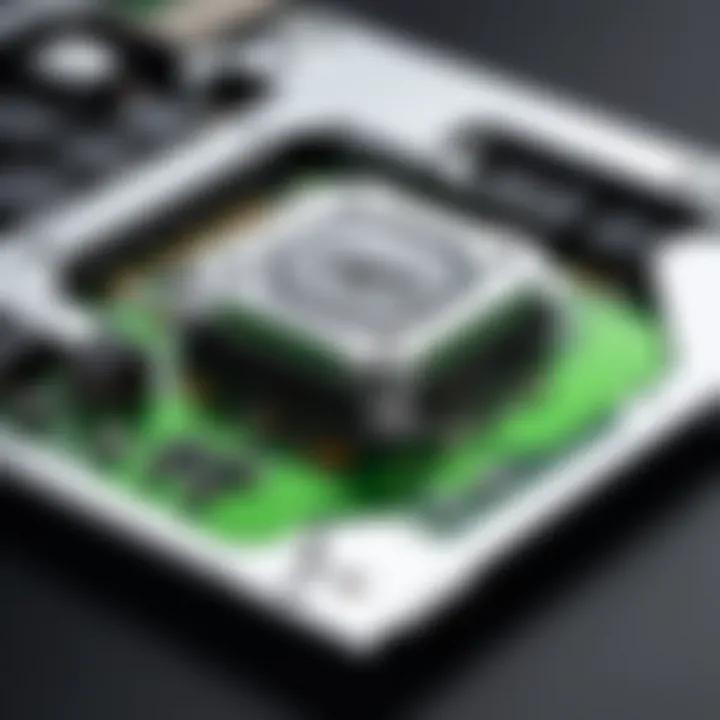
"Latency is the silent killer of gaming experiences; even slight delays can disrupt immersion."
Investing time in ensuring optimal connection and device conditions can lead to a significant improvement in streaming performance. Gaming through GeForce Now opens a pathway to powerful experiences while shifting many concerns regarding hardware limitations onto the cloud.
Comparative Analysis of GeForce Now and Traditional Graphics Cards
When examining the gaming landscape, the comparison between GeForce Now and traditional graphics cards becomes increasingly relevant. This analysis is essential for understanding not just how each option performs, but also how they align with different user needs and preferences. While traditional graphics cards like NVIDIA's GeForce RTX series offer local rendering and are crucial for high-end gaming setups, GeForce Now leverages cloud technology to provide a different kind of gaming experience. Evaluating this contrast allows potential users to determine which system may better suit their gaming objectives.
Performance Metrics
Performance metrics serve as a primary means of comparison in this analysis. When you engage a traditional graphics card, you gain direct access to high-quality rendering capabilities right on your machine. Frame rates and resolution depend on the power of the installed GPU, which can reach peaks of 4K gaming and beyond. Here are key aspects:
- Frame Rate: Traditionally, higher frame rates translate to smoother play. With local GPUs, players often achieve rates of 60 fps or more.
- Resolution: Advanced graphics cards allow pushing graphics to 4K or even higher, delivering clearer visuals.
- Latency: A less debated yet crucial factor, latency with local graphics is primarily tied to hardware performance.
In contrast, GeForce Now operates through streaming, which means performance is reliant on network conditions as well as cloud server capabilities. This leads to a different experience, where:
- Network Dependence: Performance can vary drastically based on your broadband speed. Ideally, a minimum of 15 Mbps is recommended for 720p streaming.
- Variable Frame Rates: Users may experience fluctuations depending on connection stability and server load.
- Visual Quality: While streaming can effectively handle high resolutions, issues can arise when bandwidth dips, leading to image artifacts or buffering.
"Performance can be superb on either side, but factors such as local hardware and connectivity can critically influence the gaming experience."
Cost Efficiency
Cost efficiency is another critical element that impacts user choice. Traditional graphics cards usually represent a significant upfront investment. The price of a new high-end GPU can easily reach hundreds of dollars. In contrast, GeForce Now operates on a subscription model, which can appeal to a broader audience. This shift towards cloud gaming introduces a few distinct financial considerations:
- Initial Investment: Purchasing a powerful graphics card requires a sizeable sum, while using GeForce Now generally requires either a monthly subscription or pay-per-use fees.
- Hardware Upgrades: With traditional gaming systems, users will face long-term upgrade costs to keep pace with new titles and standards. In contrast, GeForce Now inherently updates its server hardware to maintain competency in gaming experiences.
- Games Library: While the cost for accessing specific titles on GeForce Now might come into play, many existing users have access to extensive libraries without paying additional fees for high-end hardware.
Given these factors, users need to carefully consider how much they are willing to invest in upfront costs versus subscription expenses over time. Each choice offers distinct advantages and disadvantages, making the decision highly individual.
Hardware Requirements for Optimal Performance
Understanding hardware requirements is essential for achieving the best possible user experience with GeForce Now. Without the right network and device specifications, even the most advanced cloud gaming technologies may not perform optimally. The significance of hardware cannot be overlooked in the context of cloud gaming, as it directly influences latency, resolution, and overall gameplay performance.
Network Specifications
A stable and fast internet connection is a cornerstone for successful cloud gaming. GeForce Now streams games directly from the cloud, requiring sufficient bandwidth to deliver high-quality video. The recommended internet speed is at least 15 Mbps for 720p resolution and 25 Mbps for 1080p resolution. However, latency is equally important. Ideally, gamers should aim for a ping of less than 30 ms to ensure smooth gameplay.
Factors affecting network performance include:
- Connection Type
- Network Congestion
- Router Quality
- Wired connections typically offer more stability and lower latency than wireless options.
- If using Wi-Fi, the 5 GHz band is preferable for reduced interference and improved speeds.
- High traffic on your home network can lead to lag. Reducing the number of devices using the network while gaming can help.
- A good router can handle multiple devices efficiently. Investing in one that supports the latest Wi-Fi standards may benefit performance.
Ensuring proper network specifications is imperative for an optimal gaming experience with GeForce Now.
Device Compatibility
When it comes to device compatibility, GeForce Now supports a range of hardware. However, certain minimum system requirements should be met to allow seamless functioning. Supported devices include Windows PCs, MacOS, Nvidia Shield, and even smartphones via specific apps. Here are a few key points regarding device compatibility:
- Operating Systems
- Processing Power
- Storage Requirements
- Graphic Output
- Windows 10 or higher for PCs and macOS 10.10 or later are required for running the GeForce Now application.
- While the cloud handles most graphics and processing, having a decent CPU is still important for loading the client and maintaining other background functions.
- Depending on the platform being used, sufficient storage may be needed for the essential GeForce Now client.
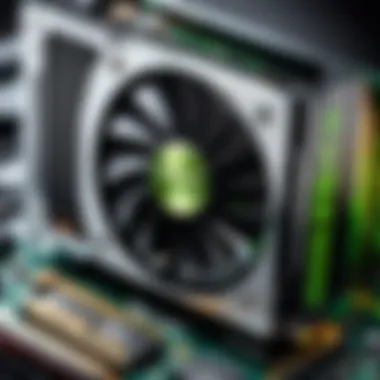
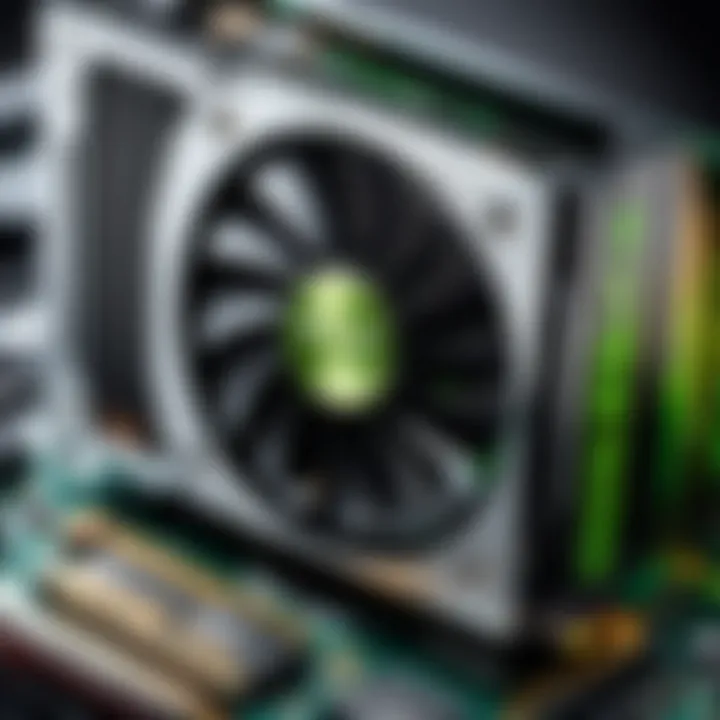
- Devices need to support HDCP (High-bandwidth Digital Content Protection) if using external monitors.
Ultimately, ensuring your device meets the established benchmarks is vital to maximize the benefits of GeForce Now.
A solid understanding of network specifications and device compatibility can significantly enhance your gaming experience while using GeForce Now.
User Experience with GeForce Now
User experience with GeForce Now is a central theme in the evaluation of its capacity to reshape gaming landscapes. This section delves into essential aspects of the platform, emphasizing its game library, user interface, and overall accessibility. Understanding user experience is crucial, as it directly impacts player satisfaction and retention.
Game Library and Availability
The game library available on GeForce Now is a key factor in attracting users. The platform supports an extensive selection of games across various genres, from indie titles to blockbuster releases. Such diversity enhances its appeal, allowing users to find games that resonate with their preferences. Major titles like Cyberpunk 2077 and Fortnite are just a few examples of what players can access. NVIDIA has formed partnerships with popular platforms like Steam and Epic Games, enabling users to seamlessly connect their accounts and access their owned games.
Additionally, the availability of new game releases often reflects in real-time updates that keep the library fresh. This constant influx of games allows existing users to explore new titles and engages potential new users looking for a comprehensive gaming ecosystem. However, certain regional restrictions exist which might limit access to specific games, complicating the experience for some users.
Ease of Use
The design and functionality of GeForce Now are geared towards simplicity and efficiency. New users can quickly set up an account and navigate the interface without much effort. The step-by-step instructions guide users through account linking and game selection.
Launching games is intuitively designed; users simply select a title, click on it, and the cloud handles the rest. The fast loading times and minimal friction ensure that gamers can jump into their sessions promptly. This user-centric approach removes barriers often associated with traditional hardware configurations.
Moreover, accessibility spans across various devices. GeForce Now operates on PCs, Macs, and mobile devices, offering flexibility. Whether one is at home or on the move, the ability to access their games motivates users to utilize the service more often. This convenience turns GeForce Now into not just a gaming solution, but a lifestyle choice.
Future of GeForce Now and Cloud Gaming
The future of GeForce Now and cloud gaming is an essential section in understanding how gaming technology evolves. As gaming moves towards a more digital and accessible model, cloud gaming plays a crucial role. This section will discuss key trends shaping cloud technology and potential developments in graphics technology that could redefine how we experience games.
Emerging Trends in Cloud Technology
Cloud technology is continuously advancing, making cloud gaming increasingly viable for everyday users. The shift from traditional gaming infrastructures to cloud-based solutions comes with numerous benefits, such as increased accessibility and instant play.
Some notable trends include:
- Increased Bandwidth Availability: As internet service providers improve infrastructure, users can expect faster, more stable connections. This directly impacts the quality and responsiveness of cloud gaming services like GeForce Now.
- 5G Implementation: With the rollout of 5G, latency issues are becoming less frequent. Gamers are no longer bound to wired connections, enabling seamless gameplay on mobile devices.
- Game Streaming Services Integration: Integration with social media platforms and streaming services is becoming prevalent. Users may switch between gaming and sharing their experiences effortlessly.
Cloud gaming is not just about playing games; it is about creating an ecosystem where experiences are shared and enhanced, further connecting communities.
Potential Developments in Graphics Technology
The graphics technology landscape is evolving rapidly. Several potential advancements could enrich the cloud gaming experience, making titles more immersive and engaging.
- Real-Time Ray Tracing: This technology simulates the way light interacts with objects, creating realistic visuals. As more games utilize real-time ray tracing, the demand for powerful GPUs will rise, making GeForce Now crucial in offering these capabilities in the cloud.
- Artificial Intelligence Integration: AI could revolutionize game development and graphics. By using AI algorithms, developers can create dynamic environments that adapt in real-time to player choices.
- Improved Compression Techniques: With advancements in data compression, streaming high-quality graphics will become more efficient. This means that users could stream graphically demanding games without needing top-tier hardware.
"The growth of graphics technology will significantly impact how we view and play games. Cloud gaming is not isolating; it is generating new opportunities for gamers and developers alike."
In summary, the future of GeForce Now and cloud gaming is quite promising. The trends in cloud technology and potential graphics developments propose a shift towards a more integrated, high-quality gaming experience, making it essential for tech-savvy individuals and gamers in general to stay informed and prepared for these changes.
Ending
In summarizing the information presented throughout this article, it becomes clear that GeForce Now represents a significant advancement in the realm of gaming technology. Its architecture combines the power of cloud computing with the practical aspects of gaming, facilitating an experience that can be both rich and flexible. Adopting this platform means players can enjoy high-quality gaming without investing in expensive hardware, which can extend gaming access to a wider audience. However, it is crucial to consider the implications of relying on cloud technology. Network stability and speed play pivotal roles in the effectiveness of the service.
Summarizing the Impact of GeForce Now
The impact of GeForce Now on the gaming landscape is multifaceted. It enables users to access graphics-intensive games across various devices such as laptops, tablets, and smartphones, which traditionally would not support such performance.
- Accessibility: Players can engage with high-end games without the need for costly hardware investments. This democratizes the gaming experience, allowing more individuals to participate.
- Flexibility: Gamers can play on different devices and locations, making the gaming experience more versatile and convenient.
- Continuous Updates: With cloud infrastructure, game titles can be updated regularly without needing manual downloads, enhancing user experience.
"GeForce Now allows gamers to leverage cloud power, transforming how games are accessed and enjoyed, reshaping the gaming culture."
Final Thoughts on Gaming and Graphics Technology
As we look to the future of gaming and graphics technology, it is evident that trends point towards increasing integration of cloud-based solutions. Players are expected to demand more seamless experiences and high-performance graphics without being tied down by physical hardware limitations.
- Cloud gaming will likely grow alongside advancements in AI and machine learning, making systems smarter and more responsive.
- Innovations in graphics processing allow for richer graphics while enhancing realism through improved physics simulations and lighting.
- The line between traditional gaming hardware and cloud solutions may continue to blur, indicating a shift towards a hybrid model where local hardware still maintains importance but is complemented by cloud technologies.



